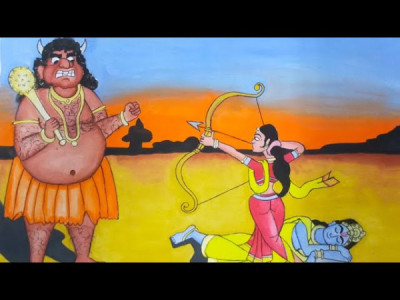Narakasura is one of the most well-known mythological figures associated with Assam’s cultural and religious heritage (specifically the region of Pragjyotishapura). According to Hindu mythology, Narakasura was the powerful demon king who ruled Pragjyotishpur, the ancient name of present-day Guwahati in Assam. His story is closely linked to the festival of Deepavali (Diwali) in India, where he is believed to be slain by Lord Krishna and Satyabhama. His legend is deeply connected with the Kamakhya Temple, one of the most sacred Shakti Peethas of India. Narakasura is traditionally considered the founder of the Bhauma dynasty in Kamarupa (present-day Assam).
The mythological accounts describe Narakasura as the son of Bhudevi (Mother Earth) and Lord Varaha (an incarnation of Vishnu). Blessed with immense strength and boons, he became a mighty ruler. Initially, Narakasura was a righteous king, but later he turned arrogant and cruel. Legends say he imprisoned thousands of women and created terror across kingdoms.
His downfall came when Lord Krishna, along with his wife Satyabhama, fought a fierce battle against Narakasura. Satyabhama, believed to be an incarnation of Bhudevi, played a crucial role in his defeat. Narakasura was finally slain, and before his death, he sought forgiveness and requested that his death be celebrated with lights and joy. This victory is commemorated as Naraka Chaturdashi, a festival celebrated a day before Diwali (Chhoti Diwali).
In Assam, the tale of Narakasura remains alive through folklore, temple traditions, and cultural celebrations. His connection with Pragjyotishpur and Kamakhya makes him an inseparable part of Assam’s mythology and spiritual history.


